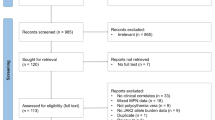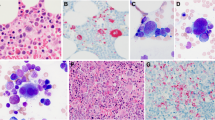Abstract
Background
Evidence of the genetic interconnectedness between PD-1/PD-L1 and circulating biomarkers related to physiological and pathological processes is largely unclear. Understanding these genetic links is crucial for gaining insights into the underlying mechanisms and potential implications in cancer immunotherapy.
Methods
To shed light on potential roles of 90 circulating biomarkers in PD-1/PD-L1, we conducted a comprehensive Mendelian randomization (MR) analysis, leveraging genetic data from large-scale genome-wide association studies.
Results
Our results revealed negative associations between EN-RAGE and TRAIL-R2 with PD-1 levels. Additionally, we observed that PD-1 levels were positively associated with TRAIL, VEGF, and ANPEP, indicating their potential role in PD-1 upregulation. Furthermore, our analysis revealed causal associations between several circulating proteins and PD-L1 levels. Thrombomodulin, PSGL-1, TNFSF14, renin, follistatin, β-NGF, KLK6, and MMP-7 demonstrated significant effects on PD-L1 regulation, suggesting their potential inhibitory role in immune checkpoint regulation. Eventually, we confirmed the potential roles of key genes involved in above circulating proteins in influencing the response to immunotherapy.
Conclusions
Our findings provide valuable evidence of the genetic interconnectedness between PD-1/PD-L1 and circulating proteins related to physiological and pathological processes, shedding light on their potential roles in disease progression and therapeutic interventions.




Similar content being viewed by others
Data availability
The original data are available in the open GWAS project (https://gwas.mrcieu.ac.uk/).
Abbreviations
- ICB:
-
Immune checkpoint blockade
- PD-1:
-
Programmed cell death protein 1
- PD-L1:
-
Programmed cell death ligand 1
- MR:
-
Mendelian randomization
- SNPs:
-
Single nucleotide polymorphisms
- ORs:
-
Odd ratios
- CIs:
-
Confidence intervals
References
Bagchi S, Yuan R, Engleman E. Immune checkpoint inhibitors for the treatment of cancer: clinical impact and mechanisms of response and resistance. Annu Rev Pathol. 2021;16:223–49.
Morad G, Helmink BA, Sharma P, Wargo JA. Hallmarks of response, resistance, and toxicity to immune checkpoint blockade. Cell. 2021;184:5309–37.
Kajioka H, Kagawa S, Ito A, Yoshimoto M, Sakamoto S, Kikuchi S, Kuroda S, et al. Targeting neutrophil extracellular traps with thrombomodulin prevents pancreatic cancer metastasis. Cancer Lett. 2021;497:1–13.
Ni W, Breitner S, Nikolaou N, Wolf K, Zhang S, Peters A, et al. Effects of short- and medium-term exposures to lower air temperature on 71 novel biomarkers of subclinical inflammation: results from the KORA F4 study. Environ Sci Technol. 2023. https://doi.org/10.1021/acs.est.1023c00302.
Li J, Zhou Z, Zhang X, Zheng L, He D, Ye Y, et al. Inflammatory molecule, PSGL-1, deficiency activates macrophages to promote colorectal cancer growth through NFκB signaling. Mol Cancer Res. 2017;15:467–77.
Davey Smith G, Hemani G. Mendelian randomization: genetic anchors for causal inference in epidemiological studies. Hum Mol Genet. 2014;23:R89-98.
Skrivankova VW, Richmond RC, Woolf BAR, Davies NM, Swanson SA, VanderWeele TJ, et al. Strengthening the reporting of observational studies in epidemiology using mendelian randomisation (STROBE-MR): explanation and elaboration. BMJ. 2021;375: n2233.
Li P, Wang H, Guo L, Gou X, Chen G, Lin D, et al. Association between gut microbiota and preeclampsia-eclampsia: a two-sample Mendelian randomization study. BMC Med. 2022;20:443.
Wei Z, Yang B, Tang T, Xiao Z, Ye F, Li X, et al. Gut microbiota and risk of five common cancers: a univariable and multivariable Mendelian randomization study. Cancer Med. 2023;12:10393–405.
Zhang Y, Zhang X, Chen D, Lu J, Gong Q, Fang J, et al. Causal associations between gut microbiome and cardiovascular disease: a Mendelian randomization study. Front Cardiovasc Med. 2022;9: 971376.
Cao J, Wang N, Luo Y, Ma C, Chen Z, Chenzhao C, et al. A cause-effect relationship between Graves’ disease and the gut microbiome contributes to the thyroid-gut axis: a bidirectional two-sample Mendelian randomization study. Front Immunol. 2023;14: 977587.
Li W, Wang R, Wang W. Exploring the causality and pathogenesis of systemic lupus erythematosus in breast cancer based on Mendelian randomization and transcriptome data analyses. Front Immunol. 2023;13:1029884.
Li W, Wang W. Decoding the genetic links between serum lipidomic profile, amino acid biomarkers, and programmed cell death protein-1/programmed cell death-ligand-1. Cancer Immunol Immunother. 2023. https://doi.org/10.1007/s00262-00023-03501-00268.
Pietzsch J, Hoppmann S. Human S100A12: a novel key player in inflammation? Amino Acids. 2009;36:381–9.
Walczak H, Degli-Esposti MA, Johnson RS, Smolak PJ, Waugh JY, Boiani N, et al. TRAIL-R2: a novel apoptosis-mediating receptor for TRAIL. EMBO J. 1997;16:5386–97.
Zhu X-D, Huang C, Shen Y-H, Ji Y, Ge N-L, Qu X-D, Chen L, et al. Downstaging and resection of initially unresectable hepatocellular carcinoma with tyrosine kinase inhibitor and anti-PD-1 antibody combinations. Liver Cancer. 2021;10:320–9.
Yi M, Jiao D, Qin S, Chu Q, Wu K, Li A. Synergistic effect of immune checkpoint blockade and anti-angiogenesis in cancer treatment. Mol Cancer. 2019;18:60.
van Leeuwen-Kerkhoff N, Westers TM, Poddighe PJ, de Gruijl TD, Kordasti S, van de Loosdrecht AA. Thrombomodulin-expressing monocytes are associated with low-risk features in myelodysplastic syndromes and dampen excessive immune activation. Haematologica. 2020;105:961–71.
Tinoco R, Otero DC, Takahashi AA, Bradley LM. PSGL-1: a new player in the immune checkpoint landscape. Trends Immunol. 2017;38:323–35.
DeRogatis JM, Viramontes KM, Neubert EN, Henriquez ML, Guerrero-Juarez CF, Tinoco R. Targeting the PSGL-1 immune checkpoint promotes immunity to PD-1-resistant melanoma. Cancer Immunol Res. 2022;10:612–25.
Ramachandran M, Vaccaro A, van de Walle T, Georganaki M, Lugano R, Vemuri K, Kourougkiaouri D, et al. Tailoring vascular phenotype through AAV therapy promotes anti-tumor immunity in glioma. Cancer Cell. 2023;41:1134-1151.e1110.
Retamales-Ortega R, Oróstica L, Vera C, Cuevas P, Hernández A, Hurtado I, Vega M, et al. Role of nerve growth factor (NGF) and miRNAs in epithelial ovarian cancer. Int J Mol Sci. 2017;18:507.
Krenzer S, Peterziel H, Mauch C, Blaber SI, Blaber M, Angel P, et al. Expression and function of the kallikrein-related peptidase 6 in the human melanoma microenvironment. J Invest Dermatol. 2011;131:2281–8.
Krafft U, Olah C, Reis H, Kesch C, Darr C, Grünwald V, et al. High serum PD-L1 levels are associated with poor survival in urothelial cancer patients treated with chemotherapy and immune checkpoint inhibitor therapy. Cancers (Basel). 2021;13:2548.
Acknowledgements
We appreciate the work of the open GWAS project (https://gwas.mrcieu.ac.uk/).
Funding
This work was supported by the National Natural Science Foundation of China Grant (82172642 to W. Wang) and Natural Science Foundation of Guangdong Province (2021A1515011683 to W. Wang).
Author information
Authors and Affiliations
Contributions
WL, WW: conceptualization, methodology, data curation, software and writing—review and editing. The work reported in the paper has been performed by the authors, unless clearly specified in the text.
Corresponding author
Ethics declarations
Conflict of interest
The authors declare that the study was performed in the absence of the conflict of interest.
Consent for publication
Not applicable.
Ethical approval
No ethics approval and written consent were needed for the secondary analysis of public data.
Informed consent
The GWAS study in question obtained informed consent from all study participants and received approval from its institutional review board, in adherence to ethical principles regulating research involving human subjects. No specific ethical approval was required for our study, given that the utilized summary-level GWAS statistics are publicly available.
Additional information
Publisher's Note
Springer Nature remains neutral with regard to jurisdictional claims in published maps and institutional affiliations.
Supplementary Information
Below is the link to the electronic supplementary material.
Rights and permissions
Springer Nature or its licensor (e.g. a society or other partner) holds exclusive rights to this article under a publishing agreement with the author(s) or other rightsholder(s); author self-archiving of the accepted manuscript version of this article is solely governed by the terms of such publishing agreement and applicable law.
About this article
Cite this article
Li, W., Wang, W. Unraveling the genetic associations between PD-1/PD-L1 and 13 circulating biomarkers linked to physiological and pathological processes. Clin Transl Oncol 26, 1157–1169 (2024). https://doi.org/10.1007/s12094-023-03333-z
Received:
Accepted:
Published:
Issue Date:
DOI: https://doi.org/10.1007/s12094-023-03333-z




